Moog’s announcement of its Mavis synth in June this year marked the latest chapter in a story that goes back to the beginnings of the pioneering synthesizer company. Though it has a considerable weight of history behind it, the build-it-yourself, analogue and semi-modular Mavis joins many other DIY synth kits on sale today, most of which are budget-priced and require minimal tools and skills to assemble.
This latest build-your-own-synth boom is nothing new—it's a phenomenon almost as old as electronic musical instruments. The contemporary Latvia-based manufacturer Erica claims that their goal behind their educational DIY kits is "to teach people with little-to-no prior experience how to design analogue synthesizer circuits from scratch."
Dozens of manufacturers big and small have expressed similar sentiments for decades. And most, whether implicitly or explicitly, cater to two overlapping but distinct groups: the electronics hobbyist, and the musician on a budget who wants a cheap way into the world of electronic sound.
Beginnings: Theremins & Ondiolines
It all started in the immediate post-war years, when there was an evolutionary leap in the development of electronic music. This was attributable to a convergence of factors: the emergence of the tape recorder, and the abundance of cheap military-surplus electronic kits including test oscillators. Most early electronic musicians were both composers and autodidact engineers, cobbling together studios and sound sources from adapted and home-made equipment.
These musical developments intersected during the post-war period with the wider rise of electronics hobbyists serviced by an array of magazines telling them how to build—among other things—a radio receiver, an electric doorbell, an amplifier and speaker for their tape recorder, or perhaps even a theremin.
Bob Moog immersed himself in this world while holed up in his father’s basement workshop as a teenager—it was here that he built his first theremin at the age of 15. His interest persisted, and at 19 he published an article about theremins in the January 1954 edition of Radio & Television News. Other enthusiasts got in touch with Bob thanks to that and he and his father formed RA Moog Co. to sell theremin kits to hobbyists from their basement.
The part-time business continued when Bob went to college. By 1960, there were several Moog theremins in the catalog, including the portable Melodia theremin, available as an assembled instrument ($75) or a kit ($29). Bob sold more than a thousand Melodia kits, and the proceeds helped fund his study as a graduate research assistant. In 1963, he set up shop in Trumansburg, New York, and RA Moog Co. became a full-time preoccupation.
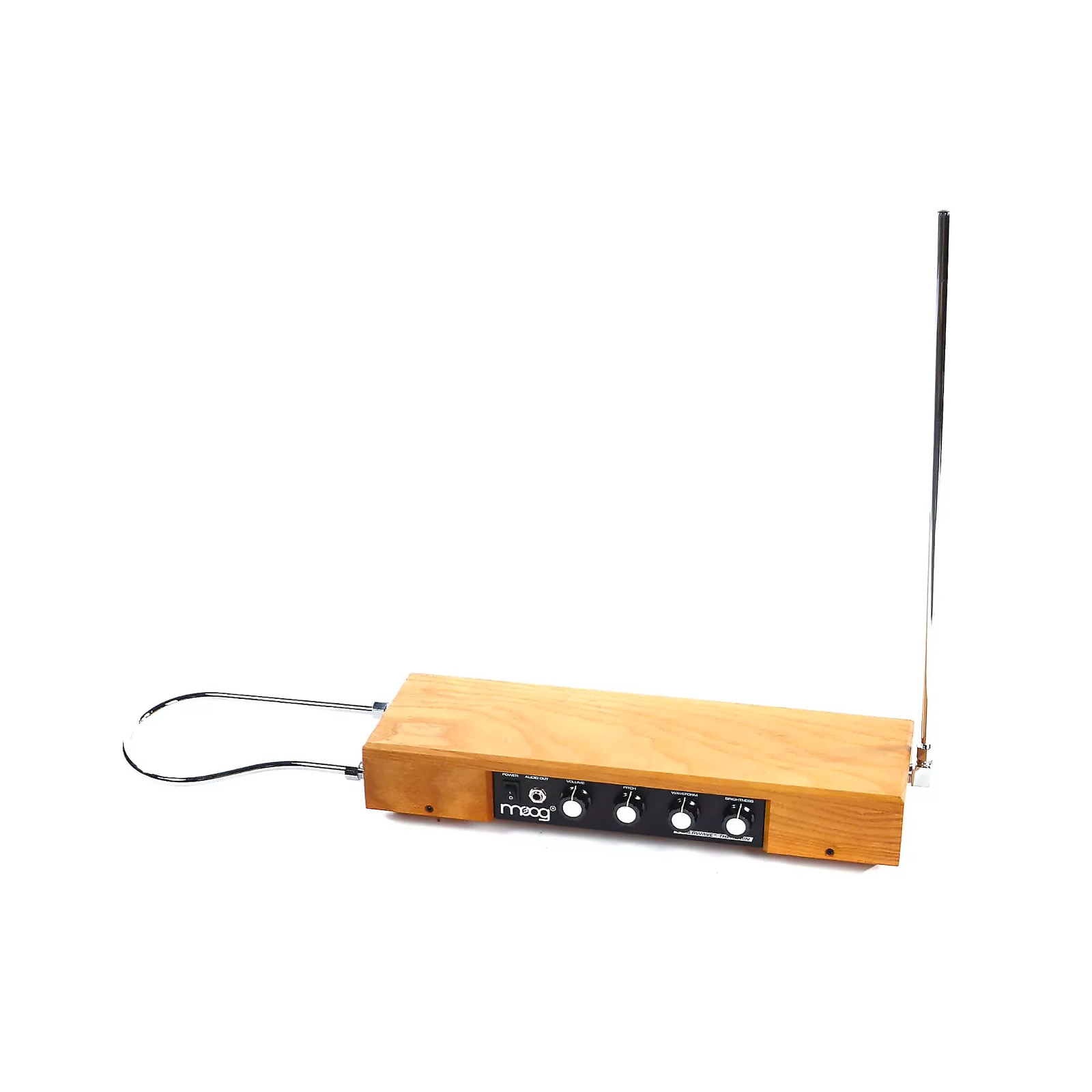
Moog’s theremins weren’t the only DIY electronic instruments marketed in the ‘50s. For the more ambitious, there was also the Ondioline invented by George Jenny. Combining a monophonic keyboard with a combo amp, it fits somewhere between two other pioneering French electronic instruments: the earlier and more complex Ondes Martenot and the later and simpler Clavioline.
Jenny put the Ondioline into production in 1947 and continued to develop and manufacture successive models until his death in 1975. Most were handmade by Jenny himself, but also he offered the instrument in France and the US as a self-assembly kit—though possibly with some reservations as evident in his 1957 manual: “Certain parts of the instrument such as the expressive keyboard and particular timbre-selecting circuits are practically impossible for amateurs to build correctly from scratch.” It’s reckoned around 1,200 Ondiolines were built, but it's likely that few of the kits were sold.
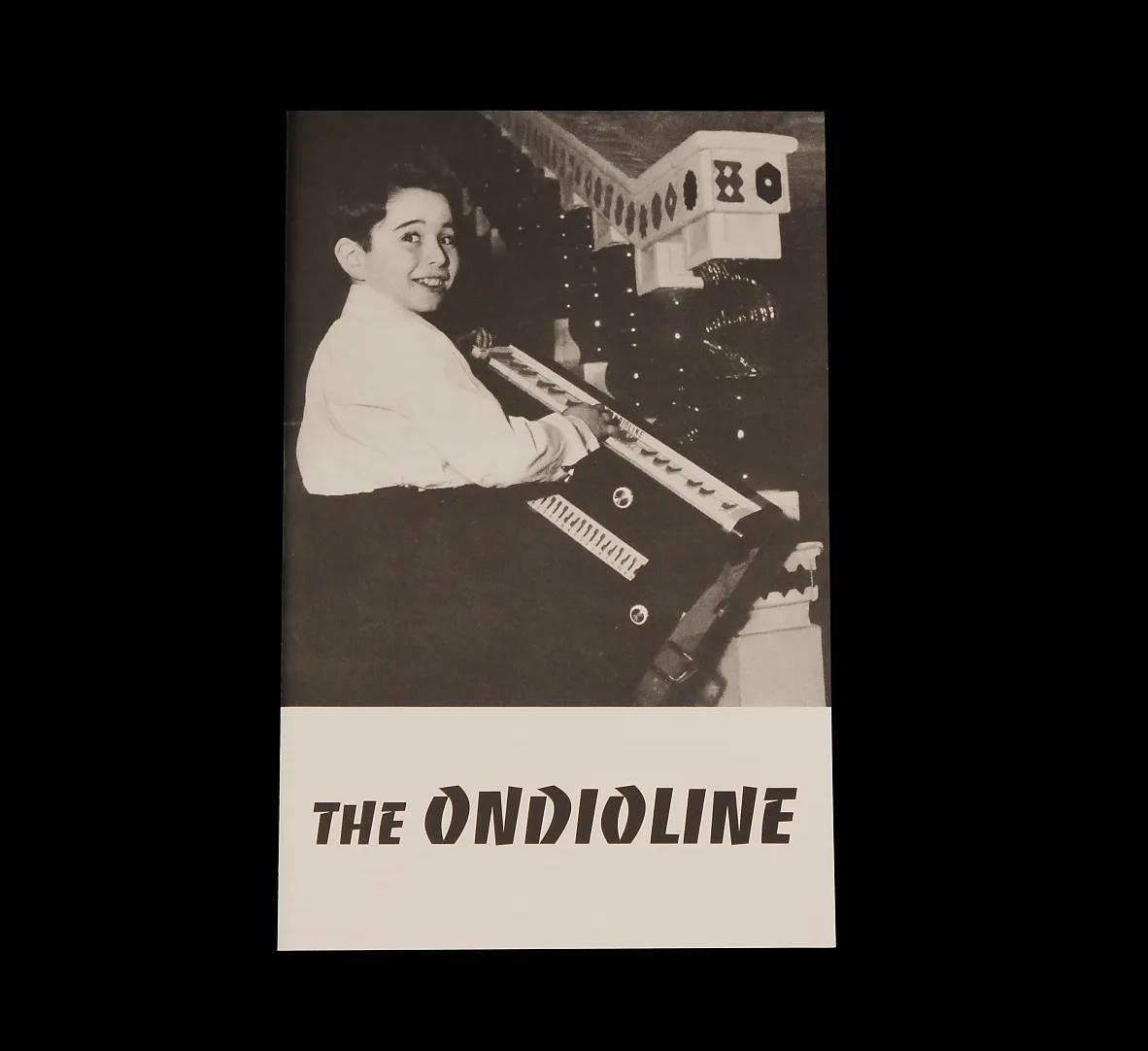
In the early ‘60s, Moog theremin kits faded in popularity as tastes changed and the company turned its attention to its vast modular synths. These big Moogs attracted a lot of interest toward the end of the decade, though they were not viable for live performance and were far too expensive for most working musicians.
As a response to this, Moog launched its Minimoog in 1970. Other companies produced small portable synthesizers around the same time—alongside this development came what hindsight now tells us was the first DIY synth boom which lasted through to the early ‘80s.
PAiA, Aries and Elektor
PAiA Electronics, Inc. was the foremost producer of synth kits in the US during this period. Founded by John S. Simonton Jr. and his father in Oklahoma City in 1959, its first commercial product—a burglar alarm—appeared a decade later and was followed soon by audio products including a Leslie-speaker simulator and a wah-wah pedal. A modular button-operated voltage-controlled synthesizer—model 2700—appeared in 1972. It was a success and led to another kit—the 2720—which had a more conventional keyboard controller. This cost $269 at a time when ARPs, Moogs, and other big modular synths retailed in the thousands.
PAiA thrived into the next decade, with more than 30 staff members frequently sending out dozens of kits a week. A particularly popular product was the Gnome micro-synthesizer module, retailed for under $70 and presented as “the perfect introduction to electronic music.” Their battery-powered PAiA OZ mini-organ could be used as a front-end controller for the Gnome—it came with its own amp and speaker and the range of its one-and-a-half-octave keyboard was extendable to five octaves. The OZ also included a novel capacitive hand-pad that converted pressure into pitch bends.
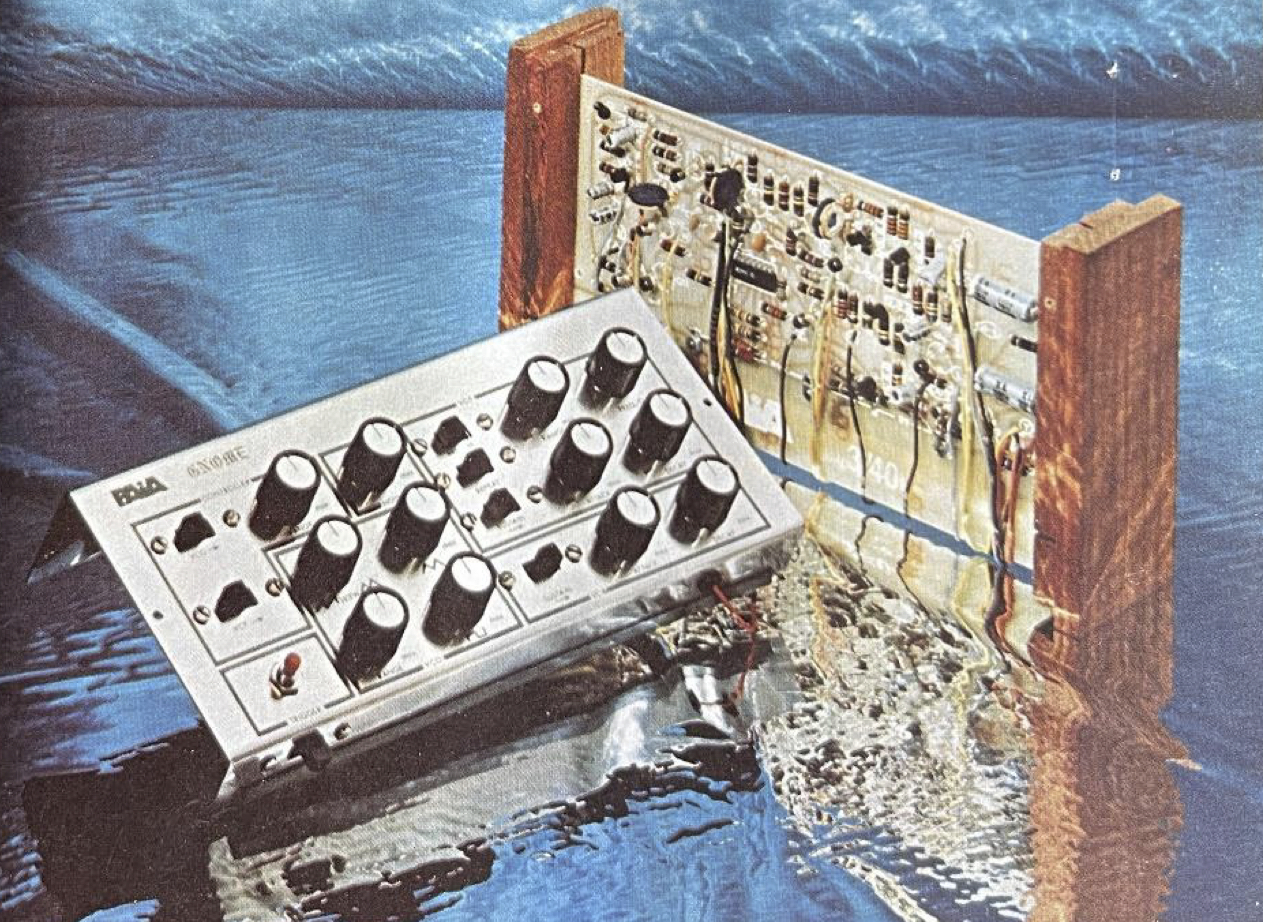
PAiA also anticipated musical trends of the time with their Programmable Drum Set—arguably the first programmable drum machine—and in 1975, the company began publishing Polyphony magazine, which was later renamed Electronic Musician. The publication is still active to this day after several shifts in ownership.
While PAiA offered plenty of entry-level options, Salem, Massachusetts-based manufacturer Aries—founded by Frank Fink in the mid ‘70s—was higher-end. The Aries 300, a large Moog-like modular rig, was “the most straightforward and universal sound synthesizer ever to be introduced” according to a late ‘70s brochure.
Available in kit or assembled form, the Aries 300 pioneered the use of 3.5mm jacks for the patch cords, as opposed to the quarter-inch jacks that Moog and most other manufacturers used at the time. It was aimed at academics and “serious” music makers—the tone of the manuals assumed customers already had a good idea of what they were doing. As the popularity of modular synths initially declined, the company closed around 1980.
Another modular synth kit in the ’70s was the Elektor Formant, launched in 1977 by Dutch company Elektor through a series of articles in their internationally-published magazine of the same name. The articles were later collected into a book, its preface describing the Formant as “a sophisticated music synthesizer whose performance was on a par with that of many commercial models, but which was designed for home construction and could be built for a fraction of their cost.”—a claim made by most kit manufacturers of the period.
Fred Judd
If companies like PAiA catered to either DIY musicians or electronics hobbyists, Fred Judd personified both. From the ‘50s onward, the author, editor, inventor, and musician wrote for and edited several British electronics hobbyist magazines with a focus on radio and tape recording. By the end of the ’50s, he was not only writing about electronic music, but making it—he published his first book on the subject, Electronic Music and Musique Concrete, in 1961, and by 1963, Judd had a basic home-built synthesizer in his home studio in London.
In 1971, Practical Wireless magazine published his design for an assemble-at-home percussion and sound-effects synthesizer—intended, as Judd wrote, “for organists who want a compact unit that will produce a useful range of individual sounds,” which included a ship’s siren, castanets, and a drum roll.
Judd’s second and final book on the subject, Electronics In Music, appeared in 1972. Though he faded from the electronic music scene and devoting most of his attention to radio soon after, the home-build scene he had helped to nurture in the UK continued to thrive.
British DIY: Powertran & Digisound
As the decade wore on, other new ventures sprung up in the UK. The highest-profile British DIY synth of this period was the Powertran Transcendent 2000, designed by Tim Orr. He developed the Transcendent 2000 while working at EMS during the early '70s. It was initially conceived as an entry-level monophonic performance synth to be assembled at home using inexpensive parts and simple construction techniques. EMS wasn’t interested, so Orr formed Powertran.
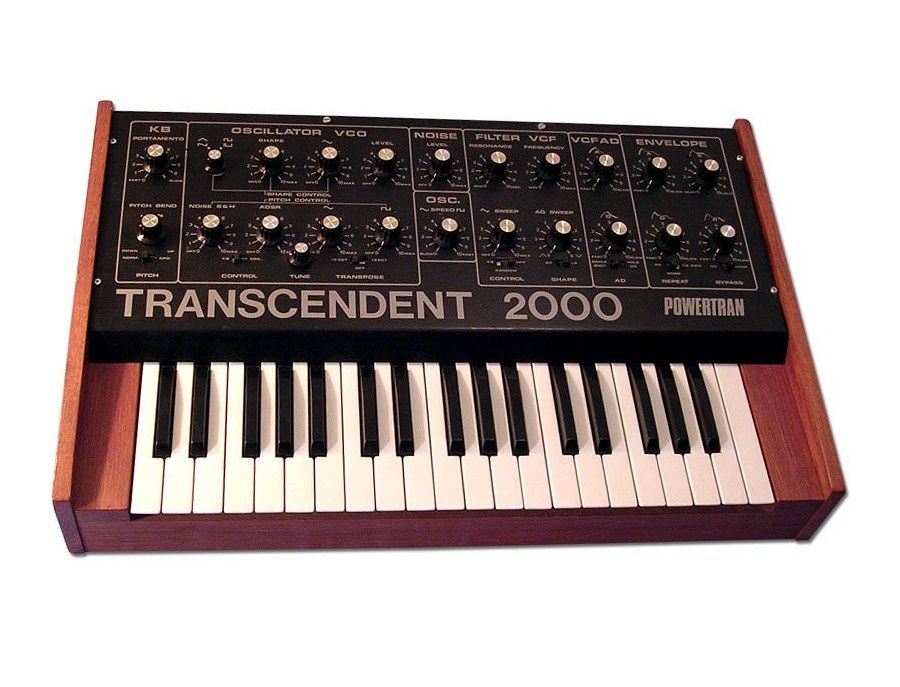
When the Transcendent kit was launched in 1978, 18-year-old Bernard Sumner saw it advertised in Electronics Today and bought one—the following year, he used the self-assembled synth on Joy Division’s debut album, Unknown Pleasures. Powertran subsequently offered other more complex kits but ceased trading by the mid ‘80s.
Another popular UK kit was the “the synthesizer you've been waiting for,” the Digisound 80, asmall modular instrument designed by Charles Blakey in Blackpool, Northern England. How-to-build instructions for his modules appeared first in Electronics Today in 1980 and in Electronics & Music Maker the following year. It was possible to build up the synth of your choice by selecting from more than 20 modules. Blakey died in the mid ‘80s, and although the company continued under different ownership for a few years, it was gone by the early ‘90s.
The Digisound 80 came in at the tail end of the first DIY synth boom. As the ‘80s progressed, the attention of both hobbyists and musicians wandered. Hobbyists tended to become interested in building home computers. The musicians, meanwhile, now had a huge range of cheap, ready-to-use programmable digital synths and drum machines from the likes of Casio, Yamaha, Roland, and Korg.
The 1990s
A little later, Akai and others began producing standalone devices that brought digital sampling within reach of the masses. As computers became more powerful, software instruments became ever more sophisticated, versatile, and alluring—by which time most synth-kit manufacturers were long gone.
However, alongside the rise of the software instrument in the ‘90s, there was a resurgence of interest in old analogue synths—not only for the sound itself, but also because they tended to offer a tactile rather than screen-based interaction. The prices of vintage synths from the ‘70s rose from bargain-basement to eye-wateringly high peaks in a few years—kit synths such as the Powertran Transcendent that were originally sold as cheap alternatives to Moogs and ARPs became collectors items themselves.
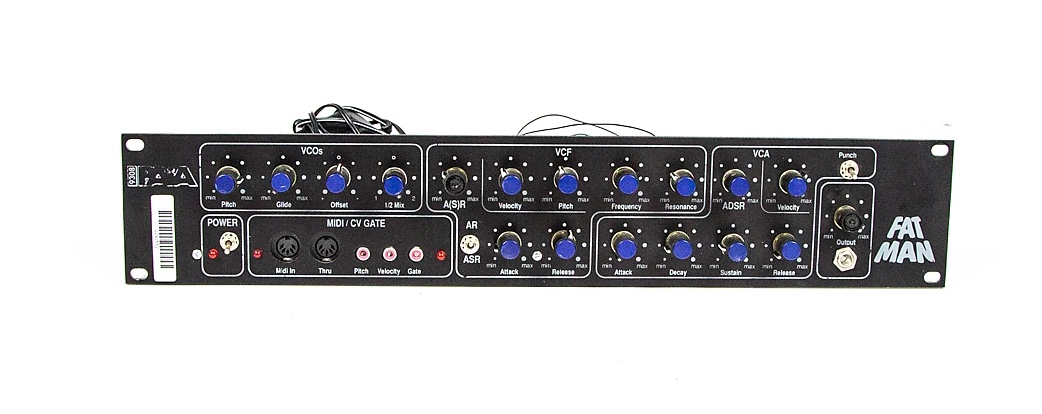
The conditions were now established for the re-emergence of entry-level synth kits. The still-active PAiA released the FatMan in the '90s, a MIDI-capable monophonic analogue synthesizer that remains in production. Gradually, other manufacturers joined in, starting what now looks like a second golden age of DIY synth kits.
The Present Tense
The current scene is similar to that of the ‘70s and early ‘80s in many ways, though there are some differences. YouTube videos and bloggers have replaced the instructional magazine articles. But just as it was the first time round, the sales pitch often offers “a cheap way to get a pro-sounding synthesizer.” The products now seem aimed more at musicians and less at electronics hobbyists, though they often overlap with circuit-bending culture.
Many newer kits are also significantly easier to assemble than the kits of the ‘70s and ‘80s. Take the now-discontinued Moog Werkstatt-01 as an example: when it was introduced in 2014 it was intended as an educational tool for workshops, and Moog claimed that it requires no prior electronics experience, calling it the "perfect afternoon project.”
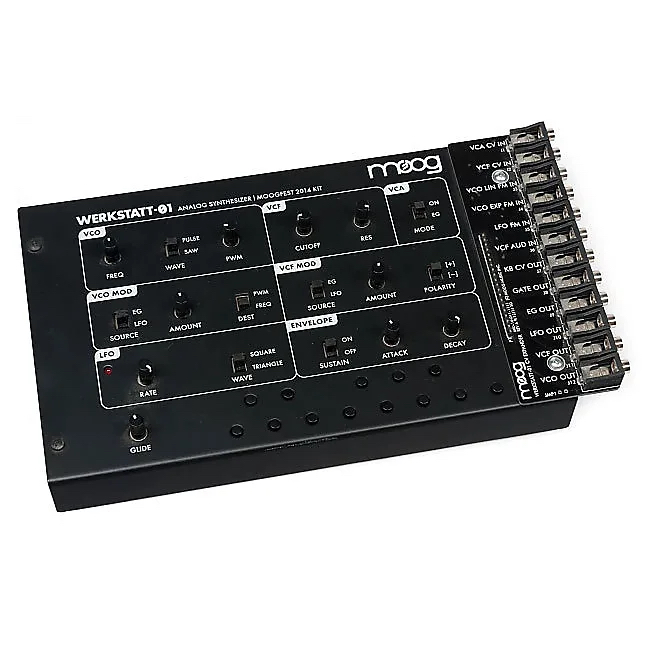
The littleBits Synth Kit is cheaper and even more basic. Developed in partnership with Korg and launched in 2013, it comprises modules that clip together using magnets. Electronic sound is seconds away from opening the box—though bear in mind the warning: “Not suitable for children under 3.”
Not all of the current crop of kits are that simple. PAiA’s FatMan requires up to 40 hours of assembly time and a soldering iron. Erica, meanwhile, is more intermediate: the Latvian company produces multiple complete electronic instruments and sound modules alongside a series of DIY kits under the brand name EDU.
Like Moog’s Werkstatt-01, Erica’s kits are intended to educate the builder about synthesis and electronics while providing them with a usable instrument. Designed in partnership with the German DIY electronics maven Moritz Klein, Erica’s DIY kits—which come with their own downloadable instruction manual—retail between €45 and €70, and when put together they would make a substantial modular synth.
Dreadbox, another contemporary manufacturer, brings together many of the themes that run through the story of DIY synths. A boutique company based in Athens, Greece, it was founded in 2012 by Yiannis Diakoumakos (CEO/developer) and Dimitra Manthou (creative director). At the time, both were impecunious musicians whose only viable route into analogue synthesis was to build their own gear—just like at least half of the customers for DIY synths and electronic instruments in their humble beginnings.
Dreadbox has since released a run of acclaimed mid-price instruments and effects, and like Erica, Dreadbox sells DIY kits alongside a catalog of assembled synths and effects units. The kits themselves, though, are limited-edition one-offs—as soon as the production run has sold through, that’s it.
On the Dreadbox website, each kit currently available is awarded a percentage score for difficulty of build and difficulty of tuning and checking, and they come with disclaimers that the team does not offer customer support “in case your build does not work properly.”
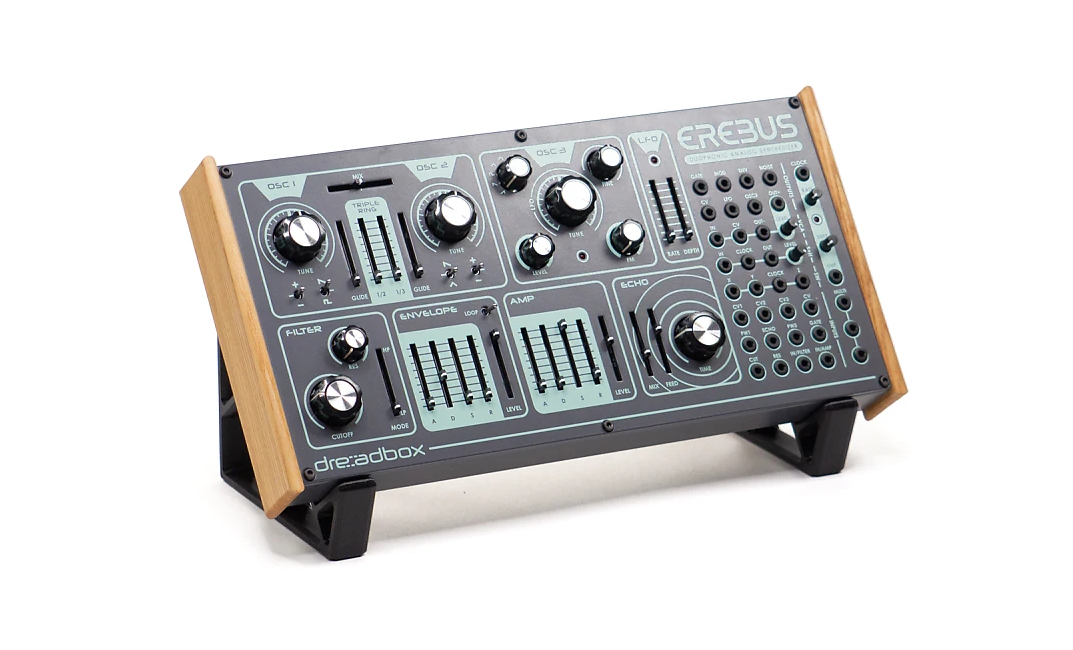
But you’re not left on your own. For example, the Dys-Metria—a bass and drums rhythm synth—comes in a kit costing €230 and scores 70 percent for difficulty of build. Comprehensive downloadable manuals are designed to help you through the build and maintenance of the instrument. And if that’s not enough, another €280 buys you a place on a workshop at Dreadbox’s HQ in Athens, where company experts will help you through the project.
This might not be necessary for the Dreadbox Erebus. Released in September 2022, it’s a build-it-yourself version of the company’s best-known synth, now discontinued in assembled form. The 200-part kit warrants a mere 15 percent score for difficulty-of-build. A few minor improvements aside it is, the makers say, exactly the same as the earlier production model, but cheaper. I sense that Bob Moog and George Jenny would have approved.
About the author: Mark Brend is an author and a musician. His books The Sound Of Tomorrow (Bloomsbury 2012) and Strange Sounds (Backbeat 2005) explore early electronic music and musical instruments. He lives in Devon, England. More info at minutebook.co.uk.
